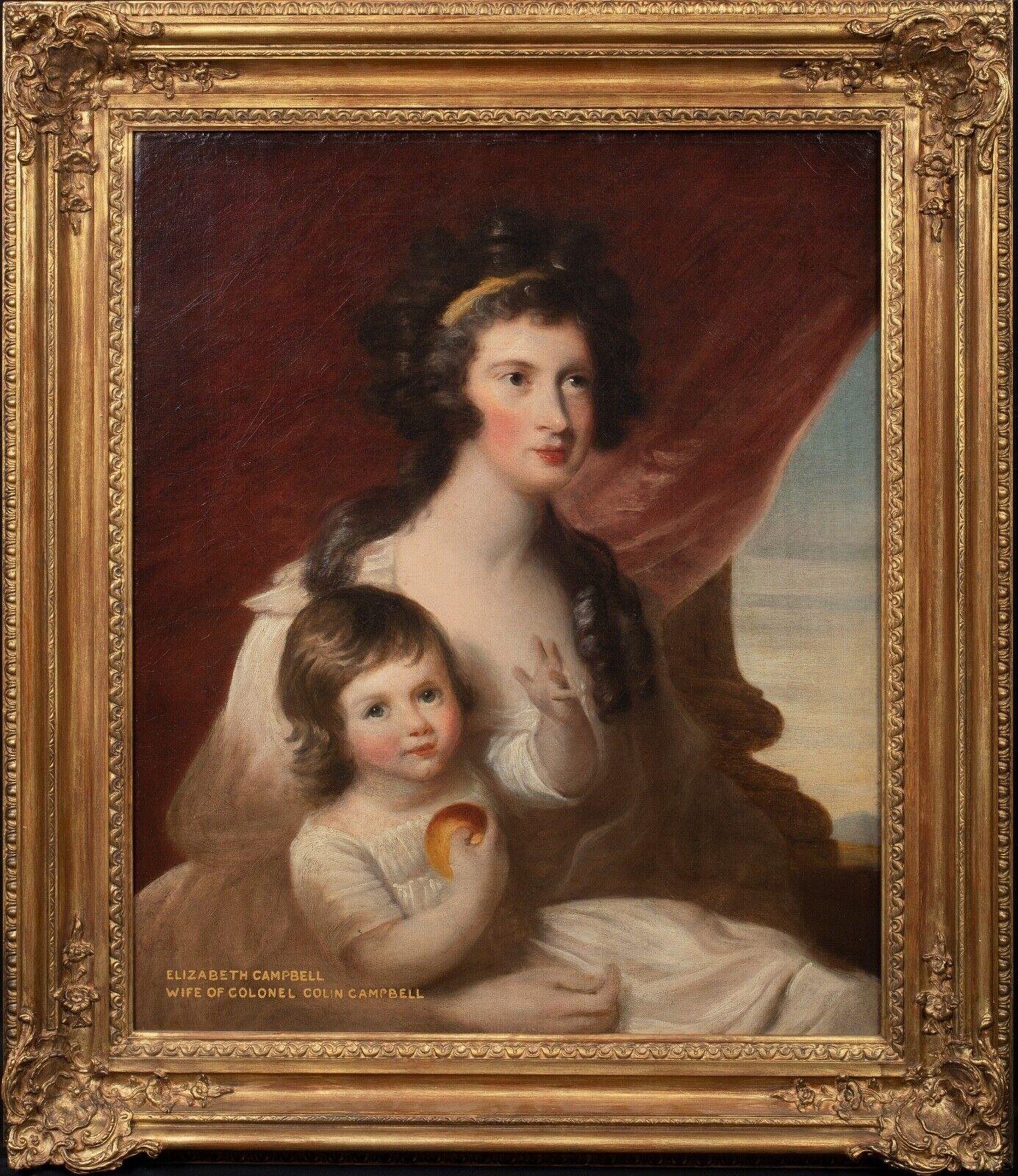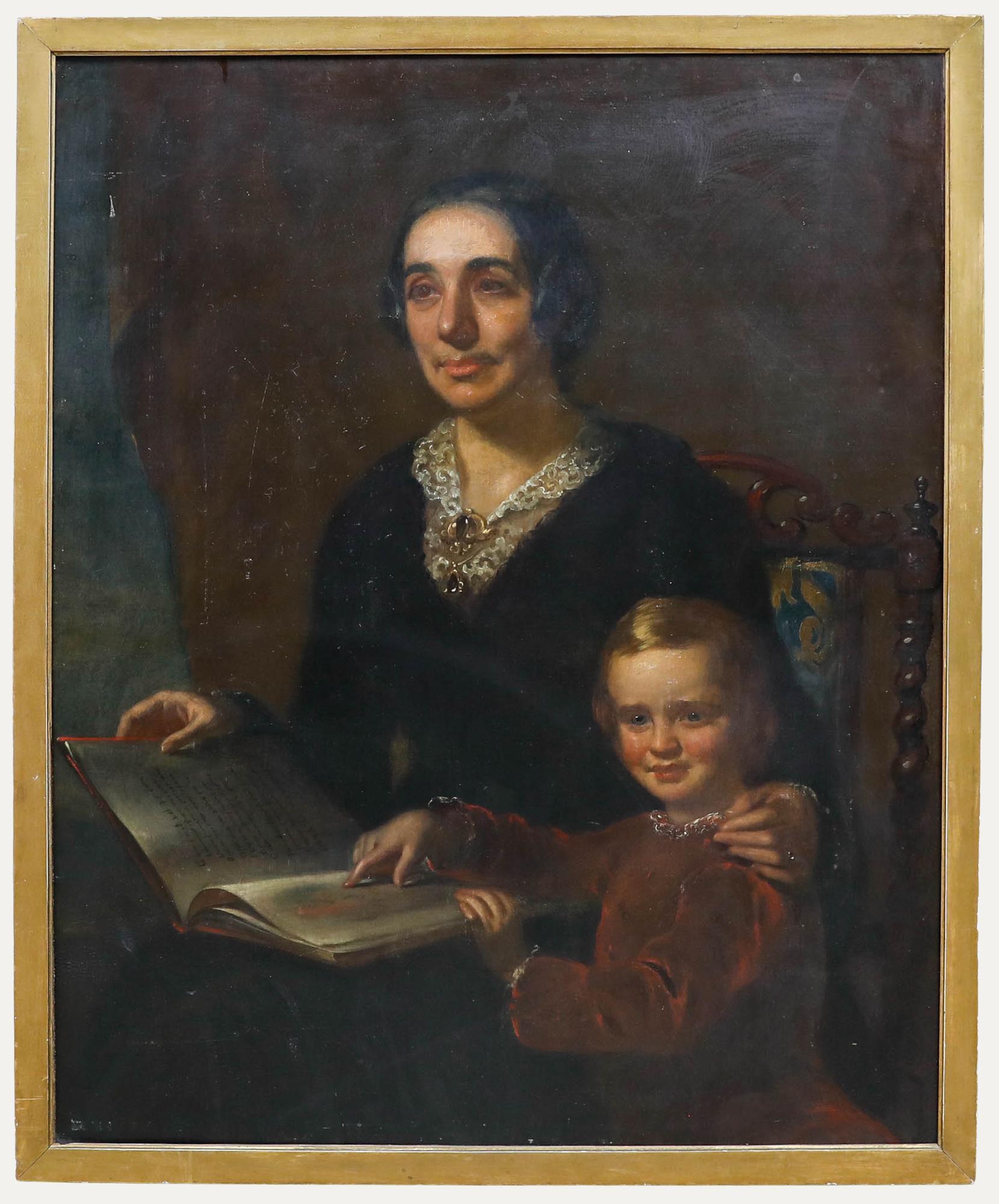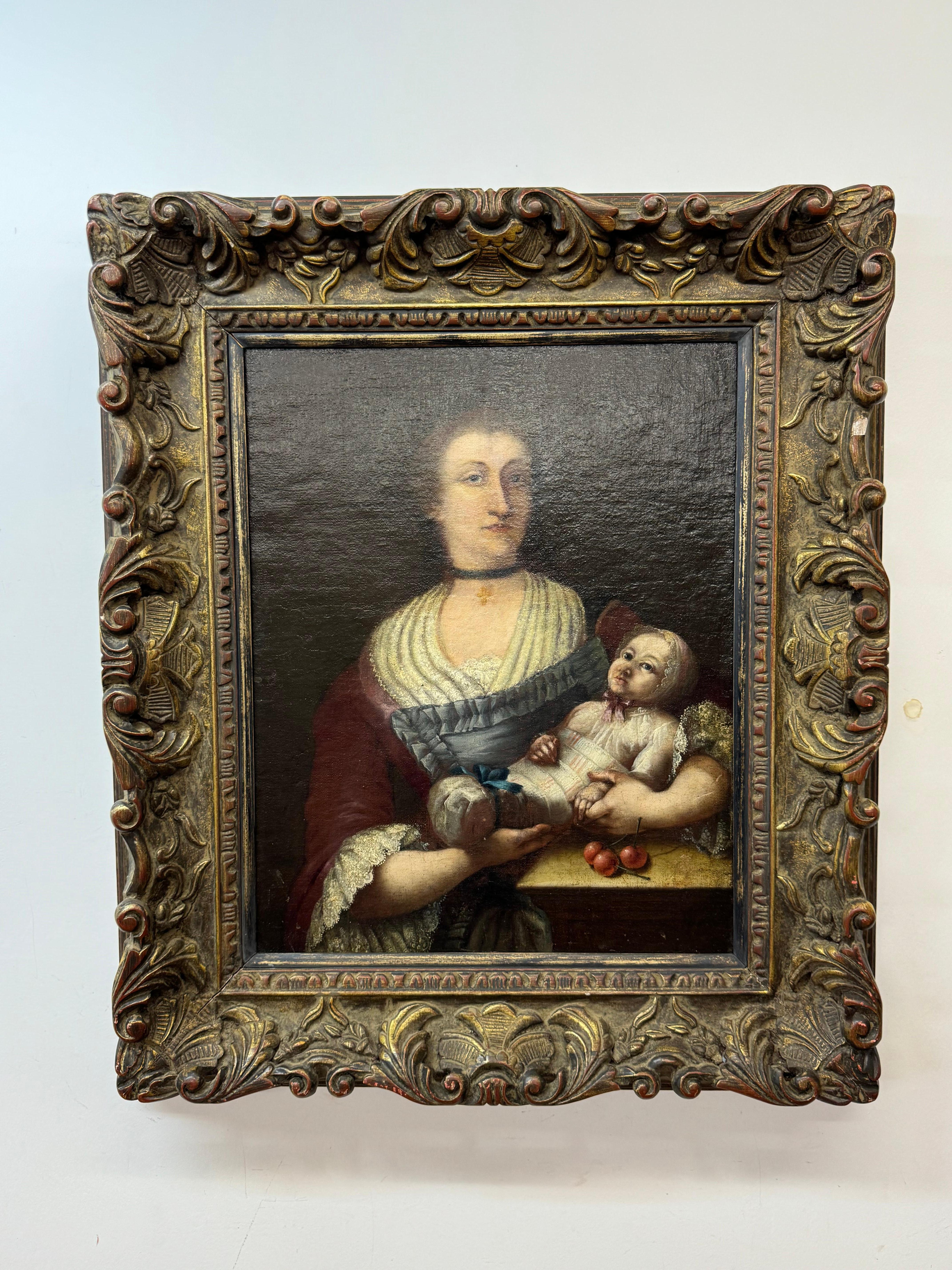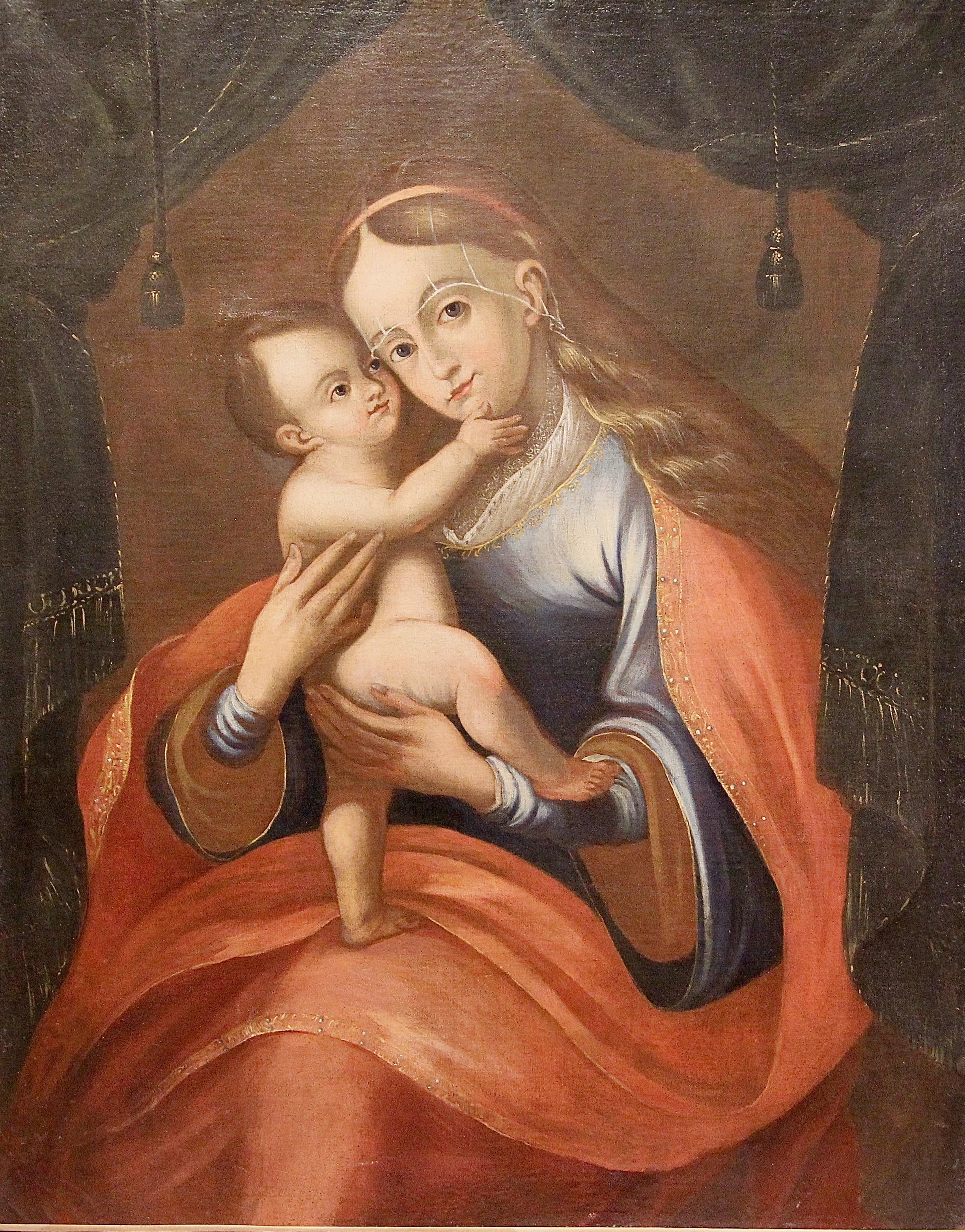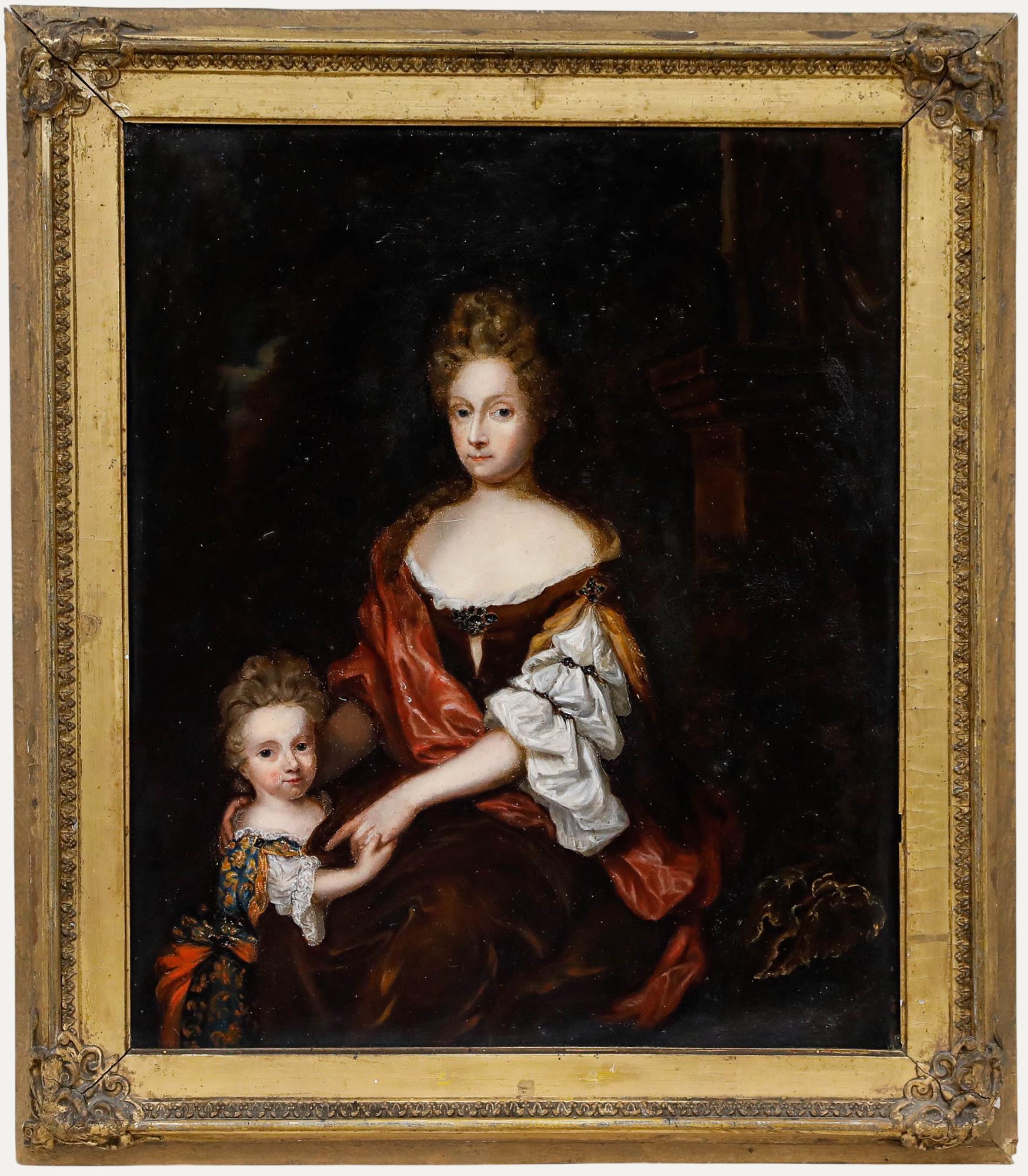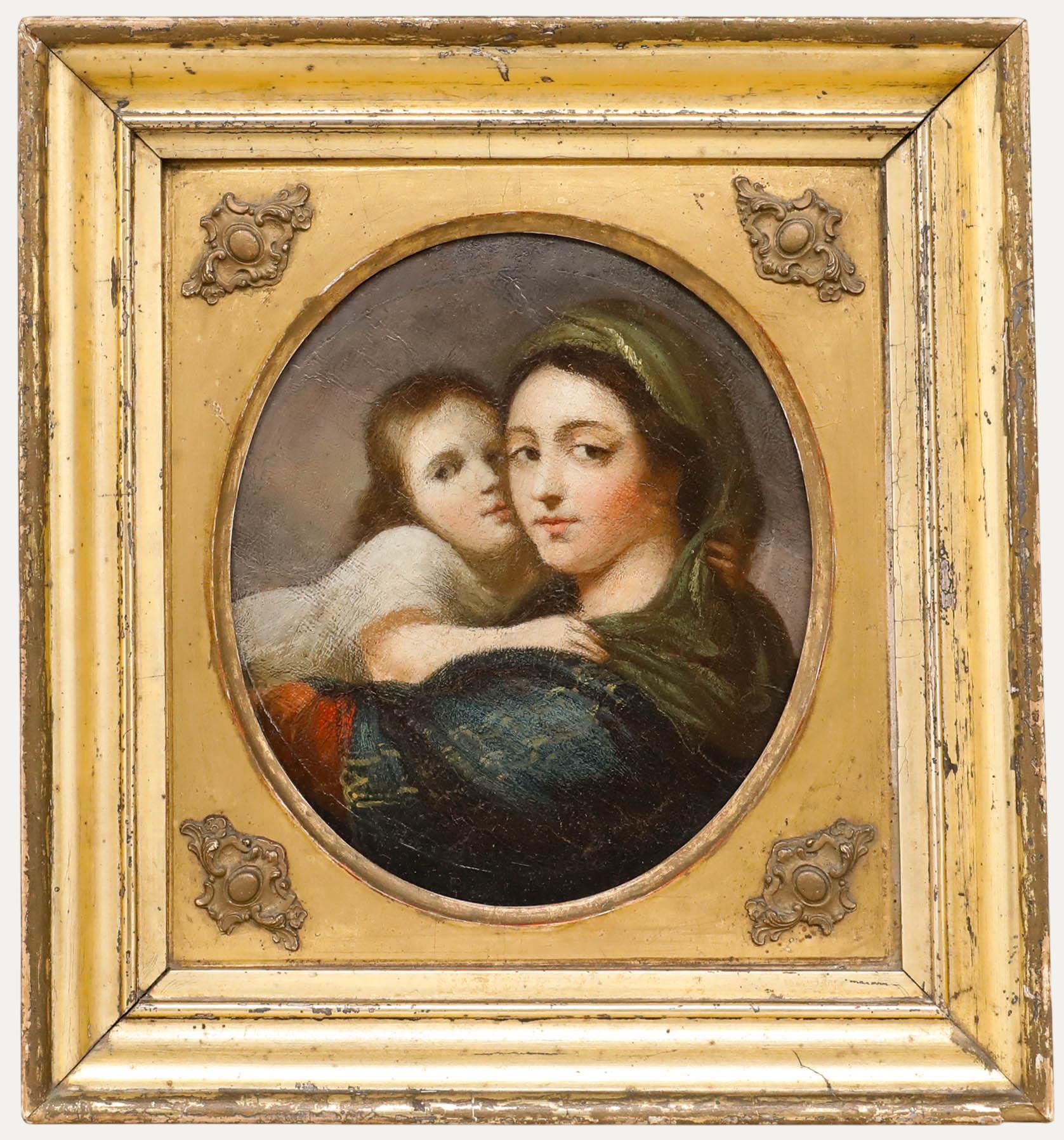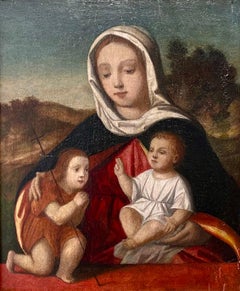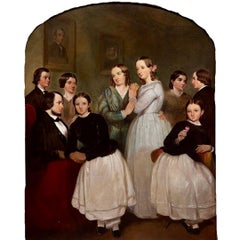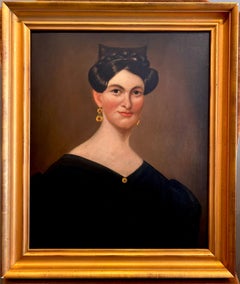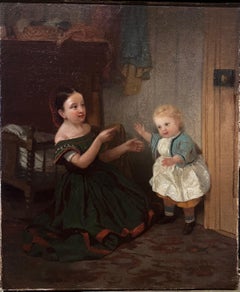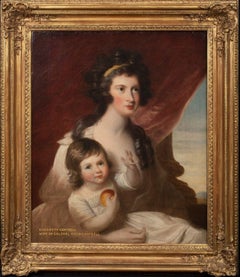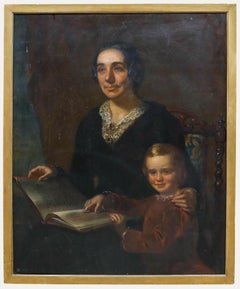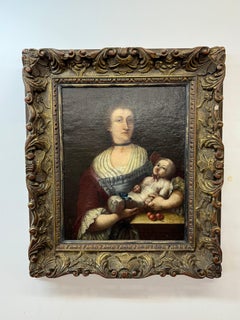Items Similar to Oil on Canvas Portrait of Mother and Child
Want more images or videos?
Request additional images or videos from the seller
1 of 10
UnknownOil on Canvas Portrait of Mother and Childc. 1850 or 1860
c. 1850 or 1860
$3,000
£2,273.07
€2,608.17
CA$4,221.48
A$4,640.57
CHF 2,438.87
MX$56,353.45
NOK 30,424.32
SEK 28,824.90
DKK 19,465.41
About the Item
This painting is unsigned but evidence shows that it is from a European school. It shows a mother with a child on her lap as well as a forest background. Likely wealthier patrons due to the style and overall appearance of the clothing both of them are wearing. This painting is in excellent condition for its age and it comes unframed. In the faces of this painting there is such detail in hidden expressions as well as a detailed design of the lace sleeves of the mothers dress. The color palette compliments and emphasizes the two people in the foreground yet leaves a hazy darker tone for the background. This is an amazing European painting and shows a variety of different master skills.
- Creation Year:c. 1850 or 1860
- Dimensions:Height: 20 in (50.8 cm)Width: 16.25 in (41.28 cm)
- Medium:
- Movement & Style:
- Period:
- Condition:
- Gallery Location:Fredericksburg, VA
- Reference Number:1stDibs: LU2574212691932
About the Seller
5.0
Vetted Professional Seller
Every seller passes strict standards for authenticity and reliability
Established in 2001
1stDibs seller since 2023
20 sales on 1stDibs
Typical response time: 1 to 2 days
- ShippingRetrieving quote...Shipping from: Fredericksburg, VA
- Return Policy
Authenticity Guarantee
In the unlikely event there’s an issue with an item’s authenticity, contact us within 1 year for a full refund. DetailsMoney-Back Guarantee
If your item is not as described, is damaged in transit, or does not arrive, contact us within 7 days for a full refund. Details24-Hour Cancellation
You have a 24-hour grace period in which to reconsider your purchase, with no questions asked.Vetted Professional Sellers
Our world-class sellers must adhere to strict standards for service and quality, maintaining the integrity of our listings.Price-Match Guarantee
If you find that a seller listed the same item for a lower price elsewhere, we’ll match it.Trusted Global Delivery
Our best-in-class carrier network provides specialized shipping options worldwide, including custom delivery.More From This Seller
View AllMadonna with Holy Child and St. John
Located in Fredericksburg, VA
Madonna with Holy Child and St. John is a masterful depiction of a tender religious scene, capturing the sacred relationship between the Virgin Mary, the infant Jesus, and St. John t...
Category
17th Century Old Masters Portrait Paintings
Materials
Wood, Oil
Francis William Edmonds Family Portrait
Located in Fredericksburg, VA
In Francis William Edmonds' family portrait, six women and three men are elegantly arranged in a formal yet intimate setting, capturing a moment of togetherness. The composition refl...
Category
Mid-19th Century Figurative Paintings
Materials
Canvas, Oil, Board
Oil Portrait of Lady
Located in Fredericksburg, VA
The 19th century American school portrait of a lady embodies the elegance and refinement of the era's portraiture. Painted with meticulous attention to detail, the portrait reflects ...
Category
19th Century American Realist Portrait Paintings
Materials
Oil, Panel
Oil Portrait of Child and Baby Sisters Playing
By John George Brown
Located in Fredericksburg, VA
This beautiful oil on canvas painting of two sisters playing by the famous American Artist John G Brown has been lined. There is a slight touch up, and i...
Category
Late 19th Century Hudson River School Portrait Paintings
Materials
Canvas, Oil
Portrait of Mother, Child, and Dog titled "The Cradle and the Companion"
By Henry Bacon
Located in Fredericksburg, VA
This tender interior scene by Henry Bacon captures a moment of warmth and domestic harmony. A young mother leans gently over a carved red cradle while her daughter, dressed in a whit...
Category
Late 19th Century Hudson River School Portrait Paintings
Materials
Wood, Oil
Portrait of Young Colonial Ladies Reading
By F. Luis Mora
Located in Fredericksburg, VA
F. Luis Mora's "Colonial Ladies Reading" is a captivating portrait that beautifully encapsulates a moment of shared intellectual pursuit and companionship during the colonial era. Th...
Category
Late 19th Century Portrait Paintings
Materials
Canvas, Oil
You May Also Like
Portrait Of Elizabeth Campbell & Daughter, Wife Of Colonel Colin Campbell
Located in Blackwater, GB
Portrait Of Elizabeth Campbell & Daughter, Wife Of Colonel Colin Campbell
circle of Margaret Carpenter (1793-1872)
Large 19th Century English portrait of Elizabeth Campbell & Daughter, oil on canvas. Seated half length mother and daughter portrait of the wife of Colonel Colin Campbell. Good quality similar to Margaret Carpenters...
Category
19th Century Portrait Paintings
Materials
Canvas, Oil
Large Late 19th Century Oil - Portrait of a Mother & Child
Located in Corsham, GB
This intimate 19th-century portrait captures a tender moment between a mother and child, both engaged in reading an illustrated book. The arrangement of the composition creates a sen...
Category
Late 19th Century Portrait Paintings
Materials
Oil
Portrait of Mother and Child 19th century
Located in San Francisco, CA
Portrait of Mother and Child 19th century
Oil on canvas
Possibly German
16.5 x 21 unframed, 25 x 29 framed
No visible signature
Category
19th Century Figurative Paintings
Materials
Canvas, Oil
18th Century, Antique Oil Painting, Old Master. Portrait of Mother with child.
Located in Berlin, DE
18th century, antique painting, oil on canvas, old master. Mother with child.
Relined canvas.
Stretcher frame also renewed.
Artist unknown.
Category
18th Century Old Masters Figurative Paintings
Materials
Canvas, Oil
$5,744 Sale Price
20% Off
Free Shipping
Manner of Caspar Netscher (1639-1684) - 19th Century Oil, Mother and Child
Located in Corsham, GB
A charming 19th-century portrait of a mother and child, rendered in the style of Dutch master Caspar Netscher (1639-1684). Blending Netscher's delicate realism with the refined elega...
Category
19th Century Portrait Paintings
Materials
Oil
Italian School 19th Century Oil - Mother and Child
Located in Corsham, GB
An intimate 19th century portrait capturing a tender moment between a mother and child, with the child's arms gently wrapped around the mother's neck as they pose in an affectionate ...
Category
19th Century Portrait Paintings
Materials
Oil
More Ways To Browse
Independence Hall
Pink Lady Painting
Self Portraits By Oil
Suchitra Bhosle
18th Portrait Gentleman
Chinese Portrait Oil Painting
Gilbert Oil Portrait
Porta Romana Vintage
17th Century Lady Portrait
19th Century Irish Oil Paintings Portraits
Portrait Fisherman
Beatrice Oil Painting
Portrait Duchess
Sir Thomas Lawrence
Small Portrait Paintings
Antique Lace Bonnet
English Gentleman Painting
Oval Oil Portrait
